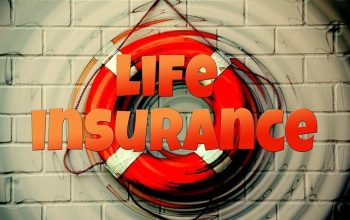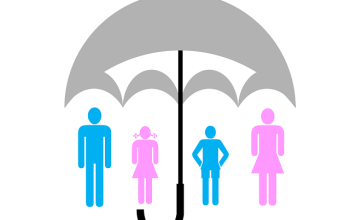General Liability Insurance, Professional Liability Insurance (Errors & Omissions), Business Liability Coverage, Public Liability Insurance, and Small Business Insurance are essential for businesses to protect against a range of liability risks. These insurance types cover various aspects of business operations, including third-party claims for bodily injury or property damage (General Liability), professional negligence or harm from services or advice (Professional Liability), public injuries or property damage on business premises (Public Liability), and product-related harm or defects (Product Liability). Comprehensive Commercial Liability Insurance can be tailored to address the unique exposures of each business, ensuring financial protection against legal disputes and compensation claims. Employer's Liability Insurance specifically addresses employee injuries or illnesses incurred during work-related activities, fulfilling a distinct role from other liability insurances. By combining these coverages, businesses can create a robust risk management strategy that protects their financial stability and operational resilience against the diverse risks inherent to running a small business.
Employer’s Liability Insurance stands as a pivotal safety net for businesses with workforce members. Mandatory across various industries, it shields employers from financial repercussions stemming from employee injuries or illnesses incurred during the course of their duties. This indispensable coverage encompasses compensation and defense costs, preventing potential economic distress due to legal claims. In this article, we delve into the intricacies of Employer’s Liability Insurance, distinguishing its role from General and Product Liability Insurance, and exploring the differences in coverage between Professional and Business Liability. Furthermore, we examine how Public Liability Insurance bolsters the protection of small businesses. Integrating this insurance with other key policies forms a robust risk management strategy that no business should overlook, ensuring comprehensive safeguards against a multitude of liabilities.
- Understanding Employer’s Liability Insurance: A Cornerstone of Workplace Safety and Compliance
- The Scope of Protection: How Employer’s Liability Differs from General and Product Liability Insurance
- Navigating the Nuances: Professional vs. Business Liability Coverage for Employers
- Broader Safeguards: The Role of Public Liability Insurance in Protecting Small Businesses
- Comprehensive Risk Management: Integrating Employer’s Liability with Other Key Insurance Policies
Understanding Employer’s Liability Insurance: A Cornerstone of Workplace Safety and Compliance
Understanding Employer’s Liability Insurance is pivotal for businesses with staff, as it forms a critical component of workplace safety and legal compliance. This insurance specifically covers the financial implications associated with employee injuries or illnesses incurred during the course of their work. It is distinct from General Liability Insurance, which protects against third-party claims for bodily injury, property damage, and personal and advertising injury. Employer’s Liability Insurance extends this protection to employees, ensuring that businesses can meet the costs of compensation and legal defense without jeopardizing their financial health. This is particularly crucial given the potential for high claims costs in work-related incidents, which could otherwise place a significant burden on a company’s resources.
Furthermore, businesses should consider other forms of liability coverage to mitigate various risks. Professional Liability Insurance (Errors & Omissions Liability) safeguards against claims of negligence or harm due to professional advice, services, or recommendations. Meanwhile, Product Liability Insurance addresses claims arising from products that cause harm when used as intended. Small Business Insurance packages often bundle these coverages with Public Liability Insurance, which protects against claims resulting from customer injuries or damage on business premises or during business operations. Commercial Liability Insurance encompasses a broad range of liability exposures, ensuring comprehensive protection for the unforeseen events that could disrupt a business’s operations and reputation. By understanding these distinctions and securing appropriate insurance, businesses can safeguard their interests, comply with legal obligations, and maintain a safe work environment for all employees.
The Scope of Protection: How Employer’s Liability Differs from General and Product Liability Insurance
Employer’s Liability Insurance is a specialized form of business liability coverage that is distinct from General Liability Insurance, Professional Liability Insurance, and other commercial liability insurances such as Public Liability Insurance and Product Liability Insurance. While these latter policies protect a business against third-party claims for bodily injury or property damage, Employer’s Liability Insurance specifically addresses the needs of businesses by providing coverage for work-related injuries or illnesses sustained by employees. This scope of protection is unique because it focuses solely on the employer’s responsibility to their staff and does not extend to incidents involving clients or the general public.
In contrast to General Liability Insurance, which covers a wide range of third-party claims, Employer’s Liability Insurance is tailored to the employment relationship. It ensures that employers can fulfill their legal obligations to provide compensation and cover legal expenses if an employee is injured or becomes ill as a result of their work. This specialized coverage is essential for small businesses, which may have limited financial reserves to handle significant claims. It is also a critical component of a comprehensive Small Business Insurance policy, safeguarding the business’s financial health against the unique risks associated with employment. Unlike Product Liability Insurance, which specifically addresses claims arising from products manufactured, sold, or promoted by the company, Employer’s Liability Insurance is focused on the occupational risks inherent in the work environment. Thus, it plays a pivotal role in risk management for businesses with employees, ensuring that they are prepared to face the financial implications of workplace injuries and illnesses.
Navigating the Nuances: Professional vs. Business Liability Coverage for Employers
Navigating the distinctions between various types of liability coverage is crucial for employers to ensure comprehensive protection. At the heart of this lies the difference between General Liability Insurance and Professional Liability Insurance, both of which are subsets under the umbrella of Business Liability Coverage. General Liability Insurance, also known as Public Liability Insurance, primarily addresses claims arising from third-party injuries or damages occurring outside the scope of work. It is a cornerstone for small businesses interacting with clients or customers on a day-to-day basis, safeguarding against claims like slips and falls on business premises.
In contrast, Professional Liability Insurance, which can be considered under Commercial Liability Insurance, protects against claims related to professional advice or services that did not meet the established standard of care. This is particularly relevant for businesses offering expertise in specific fields where the risk of giving incorrect advice or making a mistake that leads to client loss or dissatisfaction is higher. It is essential for professionals such as lawyers, accountants, and consultants who provide specialized knowledge. Additionally, Product Liability Insurance ensures coverage for claims resulting from products that fail to perform safely or as intended, potentially saving businesses from financial ruin due to costly product-related lawsuits. Employers must understand these nuances to select the appropriate Business Liability Coverage that aligns with their specific operations and risk exposure, thereby safeguarding their business’s financial health and ensuring compliance with legal requirements.
Broader Safeguards: The Role of Public Liability Insurance in Protecting Small Businesses
For small businesses, the spectrum of risks extends beyond the well-being of their employees to include third-party claims and product liabilities. General Liability Insurance serves as a cornerstone in the edifice of protection, shielding businesses from a myriad of exposures such as property damage, personal injury, or advertising injury claims. This comprehensive coverage is often bundled with other essential insurance policies, offering a robust defense against liability risks that can arise from everyday business operations.
Furthermore, Professional Liability Insurance (Errors & Omissions Insurance) is critical for businesses providing specialized advice or services. It covers the financial implications of alleged or actual negligence, errors, or omissions in professional duties. In conjunction with Business Liability Coverage and Product Liability Insurance, which safeguard against claims related to product defects or harm caused by business products, small businesses can navigate the complexities of liability risks with greater confidence. Commercial Liability Insurance is a broad term that encapsulates these various forms of insurance, ensuring that small businesses are not solely responsible for the potential costs associated with legal battles and compensation. By integrating these types of coverage into their risk management strategy, small businesses can fortify themselves against unforeseen financial burdens, maintaining both their operational continuity and financial health.
Comprehensive Risk Management: Integrating Employer’s Liability with Other Key Insurance Policies
In a comprehensive risk management strategy, Employer’s Liability Insurance serves as the cornerstone for protecting businesses against work-related injury or illness claims by employees. However, to ensure robust protection and financial security, this coverage should be integrated with other key insurance policies. For instance, General Liability Insurance safeguards against third-party claims for bodily injury, property damage, and personal and advertising injuries, which can arise from daily business operations. Small Business Insurance packages often include this as a standard component, recognizing the vulnerabilities unique to small enterprises.
Furthermore, Professional Liability Insurance, also known as Errors and Omissions (E&O) insurance, is crucial for businesses offering professional advice or services. It covers claims of negligence or harm due to professional errors, which do not involve physical injury but can still lead to significant legal costs and reputational damage. Similarly, Product Liability Insurance is essential for companies manufacturing or selling products, as it provides coverage against claims that a product caused injury or harm. Businesses dealing with the public should also consider Public Liability Insurance, which covers incidents where a business unintentionally causes harm to people or their property during the course of normal activities. Lastly, Commercial Liability Insurance can be tailored to the specific needs of a business, ensuring that all potential risk factors are addressed. By combining Employer’s Liability Insurance with these other forms of coverage, businesses can create a comprehensive risk management strategy that provides comprehensive protection and financial stability, allowing them to operate confidently in today’s complex business environment.
In conclusion, Employer’s Liability Insurance serves as a critical safeguard for businesses with employees, mandating coverage against work-related injuries or illnesses. This protection extends beyond the legal obligations, offering financial security to employers by covering compensation and legal defense costs. It is a pivotal aspect of a robust risk management strategy, complementing other key insurance policies such as General Liability Insurance, Professional Liability Insurance, and Public Liability Insurance. For small businesses in particular, integrating Employer’s Liability with tailored Small Business Insurance plans ensures comprehensive protection. Recognizing the distinctions between these liability coverages is essential for businesses to navigate their exposures effectively, thereby maintaining operational integrity and fiscal health amidst the complexities of today’s business landscape.



